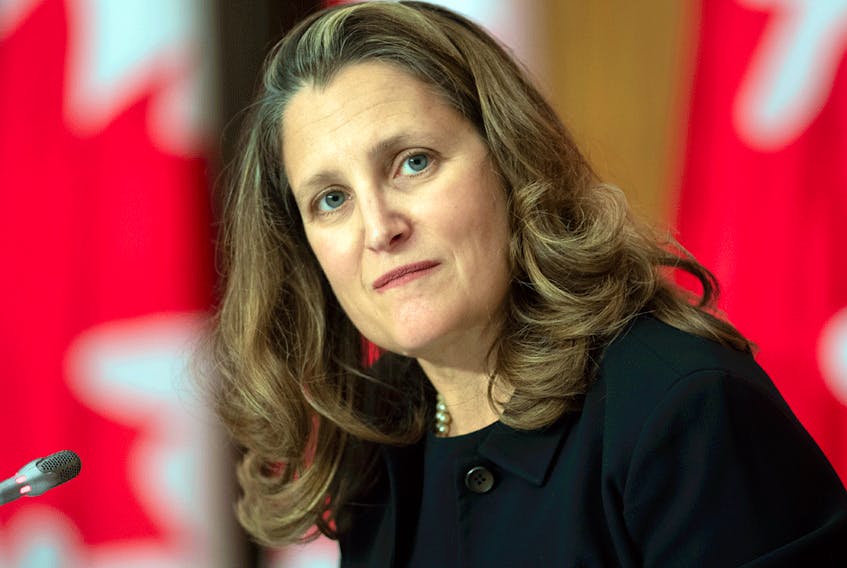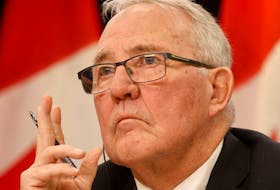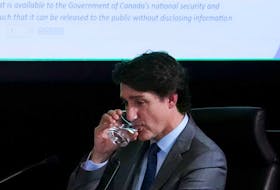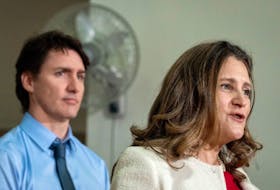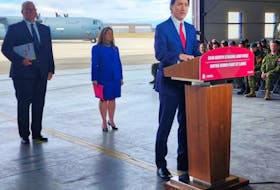In broad terms, we know what will be in Monday’s fiscal update because the government told us in its throne speec h.
Political historians will remember that two months ago – about five years on the pre-COVID space-time continuum – the Liberals promised to introduce a “resiliency agenda.”
This implied billions of dollars of new spending on COVID relief, but also on “building back better” projects like pharmacare, childcare, climate change and new social benefits.
It is unclear how much of that agenda has succumbed to the emerging realization that the government spent far too much money on the first wave, which will hamper what can be disbursed now. As the OECD noted, Canada’s household income rose 11 per cent in the second quarter, even as GDP tumbled 10 per cent, in large measure because the federal government pushed $56 billion out of the door in income support, to replace just $23 billion in lost income.
The splurge has left Canada with the largest deficit to GDP ratio in the G20.
Sources suggest the focus of this update will be the pandemic, rather than the much-vaunted Great Reset.
There will likely be support for more childcare, which almost everyone agrees is needed to get women back into the workforce.
The government is expected to follow through on its promise to tax “extreme wealth” by addressing what it called “avoidance” by digital giants like Netflix and Amazon.
There will be no clear fiscal anchor but finance minister Chrystia Freeland will signal her general approach to gaining control of a deficit estimated by Scotiabank at $425 billion this year. At a speech she made to the Toronto Economic Forum last month, she said the government’s expansive approach to fighting the pandemic is “not infinite.” She said the government will impose limits upon itself, “rather than wait for the more brutal external restraints of international capital markets.” Just don’t expect those limits to be outlined in this update.
There will be support for distressed sectors like trade, tourism and hospitality but negotiations with the airline industry are ongoing, so it is likely to be left out.
All of this is being positioned as a “down-payment” on what is to come. “But those down-payments have to be useful (in fighting the pandemic),” said one person with knowledge of the update.
A broader recovery plan, and perhaps some of the big ticket spending items like pharmacare, may have to wait for the spring budget – for good reason.
The CD Howe Institute’s fiscal and tax working group estimated in a paper released on Friday that the price tag for the measures in the speech from the throne would be an additional $19-$44 billion, depending on which policies are introduced and how quickly.
This group, co-chaired by former federal Liberal finance minister John Manley and former Saskatchewan finance minister Janice MacKinnon, includes some of the country’s finest policy minds – former senior finance bureaucrats Michael Horgan and Paul Boothe, tax guru Jack Mintz and respected economists like Glen Hodgson and Stéfane Marion of National Bank Financial. They have travelled the road, they know where the holes are deepest and, as a group, they are concerned about planned increases in government spending.
“This amount of unfunded spending would leave the country vulnerable to adverse shocks and is likely not sustainable,” the working group concluded.
The members said that now is not the time to raise taxes to pay for any planned increases and suggested a thorough review of existing programs to find savings. But longer term, if the government is intent on new spending, it should be matched by increases to the GST, the group said.
“Proposed spending should be assessed alongside proposed tax financing in a transparent manner. Only then would Canadians be able to assess how much they value the proposed initiative,” the members said.
The working group said an increase of two percentage points in the GST/HST, offset with a low income tax credit to neutralize the regressive impact, would raise $15 billion.
This amount of unfunded spending would leave the country vulnerable to adverse shocks
That would not be politically popular but the government could make the proposal more palatable to progressives by implementing an increase in the capital gains inclusion rate, from 50-75 per cent that would raise a further $5 billion.
Justin Trudeau ruled out tax increases in August, saying the last thing Canadians need is to see a rise in their cost of living.
But something has to give or the centre will not hold.
Nobody wants tax increases but, equally, you can’t have nice things without paying for them.
This government has a tendency to present its spending plans as cost-free – at least to this generation.
How often have we been told “we can’t afford not to….”?
There seems to be a dawning realization that compulsive spending disorder eventually leads to distress and impairment.
Freeland should signal that there are times when we can afford not to.
• Email: [email protected] | Twitter: IvisonJ
Copyright Postmedia Network Inc., 2020

